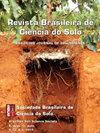Effects of Meloidogyne incognita on the fungal community in tobacco rhizosphere
IF 2
4区 农林科学
Q3 SOIL SCIENCE
引用次数: 3
Abstract
The often widespread and serious Root-Knot Nematode (RKN) disease is an important soil-borne disease affecting tobacco production. This study aimed to understand micro-ecological changes caused by RKN disease and interactions between disease and rhizosphere soil fungal communities. The 18S rRNA gene sequencing was used to study changes in rhizosphere fungal community of tobacco plants having RKN disease. In June 2018, a paired comparison was performed between rhizosphere fungal community structures of healthy tobacco plants and those with RKN disease in Yuxi and Jiuxiang, Yunnan Province, China. Compared with uninfested soil, the OTU abundance, Shannon, ACE and Chao1 indexes of infested soil in the two tobacco areas showed a decreasing trend. Principal Coordinate Analysis showed fungal communities of infested soil and uninfested soil in the two tobacco areas were clustered in different areas, and the community composition was significantly different. Moreover, the dominant fungi community and relative abundance are significantly different at phylum, genus and species levels. More beneficial fungi, such as Penicillium and Aspergillus, were found in soil samples of healthy plants, whereas more pathogenic fungi, such as Phoma and Alternaria, were found in soil samples of diseased plants. In conclusion, changes in fungal community structure and decreases in species diversity and richness were important characteristics of rhizosphere soils from diseased tobacco plants. Disequilibrium in the tobacco rhizosphere micro-ecosystem may allow the development of RKN disease and other more complex diseases.黑穗槐对烟草根际真菌群落的影响
根结线虫病是影响烟草生产的一种重要土传病害,分布广泛,危害严重。本研究旨在了解RKN病害引起的微生态变化以及病害与根际土壤真菌群落的相互作用。利用18S rRNA基因测序技术研究了烟草RKN病根际真菌群落的变化。2018年6月,对云南省玉溪和九乡地区健康烟草根际真菌群落结构与RKN病烟草根际真菌群落结构进行了配对比较。与未侵染土壤相比,两烟区侵染土壤的OTU丰度、Shannon、ACE和Chao1指数均呈下降趋势。主坐标分析表明,两烟区侵染土和未侵染土真菌群落聚集在不同区域,群落组成差异显著。此外,优势真菌群落和相对丰度在门、属和种水平上存在显著差异。在健康植物的土壤样品中发现了更多的有益真菌,如青霉菌和曲霉,而在患病植物的土壤样品中发现了更多的致病真菌,如Phoma和Alternaria。综上所述,真菌群落结构的变化、物种多样性和丰富度的降低是病烟根际土壤的重要特征。烟草根际微生态系统的不平衡可能导致RKN病和其他更复杂的疾病的发生。
本文章由计算机程序翻译,如有差异,请以英文原文为准。
求助全文
约1分钟内获得全文
求助全文
来源期刊

Revista Brasileira De Ciencia Do Solo
农林科学-土壤科学
CiteScore
3.00
自引率
11.80%
发文量
32
审稿时长
9-24 weeks
期刊介绍:
The Revista Brasileira de Ciência do Solo is a scientific journal published by the Brazilian Society for Soil Science (SBCS), founded in 1947, and is responsible for the propagation of original and inedited technical-scientific work of interest for Soil Science.
Contributions must not have been previously published or submit to other periodicals, with the only exception of articles presented in summarized form at professional meetings. Literature reviews are accepted when solicited by the Editorial Board.
 求助内容:
求助内容: 应助结果提醒方式:
应助结果提醒方式:


